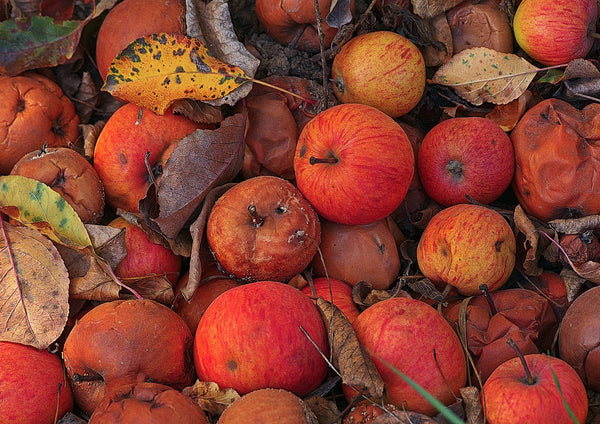Have you ever seen a fruit fly? If so, you know just how annoying they can be! These tiny pests can invade your home and cause all sorts of problems. But what do fruit flies look like? And where do they come from? In this blog post, we will answer these questions and provide some tips for getting rid of fruit flies. Stay tuned!
Fruit flies are small, dark-colored flies that are often found near rotting fruit. Despite their name, they are not attracted to just fruit – they will also feed on other decaying organic matter, such as garbage or manure. While they do not carry diseases, their presence can indicate the presence of other pests, such as ants or cockroaches. Fruit flies are also a nuisance because they are attracted to human food and can contaminate it with their faeces. To get rid of fruit flies, it is important to remove any sources of rotting organic matter from your home. You can also use traps or sprays to kill them.
What do fruit flies look like?
The Drosophila melanogaster, better known as the fruit fly, is a small species of fly that is commonly found in homes. While their size can vary slightly, adult fruit flies are typically between 3 and 4 mm long. One of the most distinguishing features of fruit flies is their eyes; many have red eyes, though some may be dark-eyed. In terms of body coloration, fruit flies typically have a tan thorax with a black and grey abdomen. However, they can also appear to be brown or tan in color.
The types of fruit flies
The fruit fly is a common insect that can be found all over the world. There are many different types of fruit flies, and each one has its own unique characteristics.
- The Mexican Fruit Flies
- The Citrus Fruit Flies
- The Olive Fruit Flies
- The Caribbean Fruit Flies
- The Mediterranean Fruit Flies
- The Western Cherry Fruit Flies
Fruit flies' biology & behavior
Adult fruit flies are about 0.32 cm long and usually have red eyes. They are brown in color, with a black back section. Fruit flies lay their eggs on the surface of any fermented food, or other damp and organic materials. When hatching, the smaller larvae continue to affect the surface of the fermentation mass. You can cut away the superficial skin damage on some fruits and vegetables, without affecting the rest of the fruit or vegetable. If left unchecked, they can produce 500 eggs in a week.
Fruit flies' life cycle
A fruit fly's life cycle can be separated into four distinct stages: egg, larva, pupa, and adult. The entire process usually takes around 25 days or more to complete, although this can vary depending on environmental conditions and the availability of food. The fruit fly starts its life as an egg, which hatches into a larva after a few days. Once it reaches the pupal stage, it is fully grown and typically emerges as an adult within a week. Adult fruit flies can live for up to 30 days before dying.
What damage do fruit flies cause
While fruit flies may be small, they can cause a lot of damage. For example, they are attracted to overripe fruit, which they then puncture with their sharp mouthparts. This allows bacteria and other pathogens to enter the fruit, leading to rot and decay.
Fruit flies lay their eggs in rotting fruit, causing the larvae to emerge and further contaminate the food source. As a result, fruit flies can cause significant economic losses for farmers and home gardeners alike. Fruit fly damage isn't just limited to crops - they can also transmit diseases to humans. For example, they have been known to carry Salmonella and E. coli, which can cause food poisoning. In addition, they can spread diseases like dysentery and conjunctivitis. As a result, it is important to take steps to control fruit fly populations.

The signs you have fruit flies in your house:
- You see small flies near your fruit bowl.
- You notice small flies near your trash can or garbage disposal.
- You see small flies near your sink or drains.
- You find small fly larvae in your fruit or in damp areas of your home.
How to get rid of fruit flies
Anyone who has ever dealt with a fruit fly infestation knows how frustrating and pesky these tiny little insects can be. Fortunately, there are a few simple steps you can take to get rid of them for good.
First, it's important to identify where the fruit flies are coming from. If you have ripe fruits or vegetables sitting out, they will attract fruit flies. Be sure to keep all food items properly stored in the fridge or pantry.
Secondly, you need to eliminate their breeding grounds. Fruit flies lay their eggs in the decomposing matter, so do a thorough cleaning of your kitchen garbage can and drain. You may also want to pour some boiling water down your drain to kill any eggs that are present.
Finally, you can use traps to catch the fruit flies. A simple trap can be made by filling a bowl with apple cider vinegar and covering it with plastic wrap. Poke a few small holes in the wrap and the fruit flies will be drawn in but won't be able to escape.
With these three steps, you'll be able to get rid of your fruit fly problem for good.
Conclusion
Although fruit flies are often seen as a nuisance, it is important to be aware of the potential damage they can cause to your home and food. If you think you may have a fruit fly infestation, there are some easy ways to get rid of them. By taking precautions and being mindful of the signs, you can keep your home free from these pesky pests.











